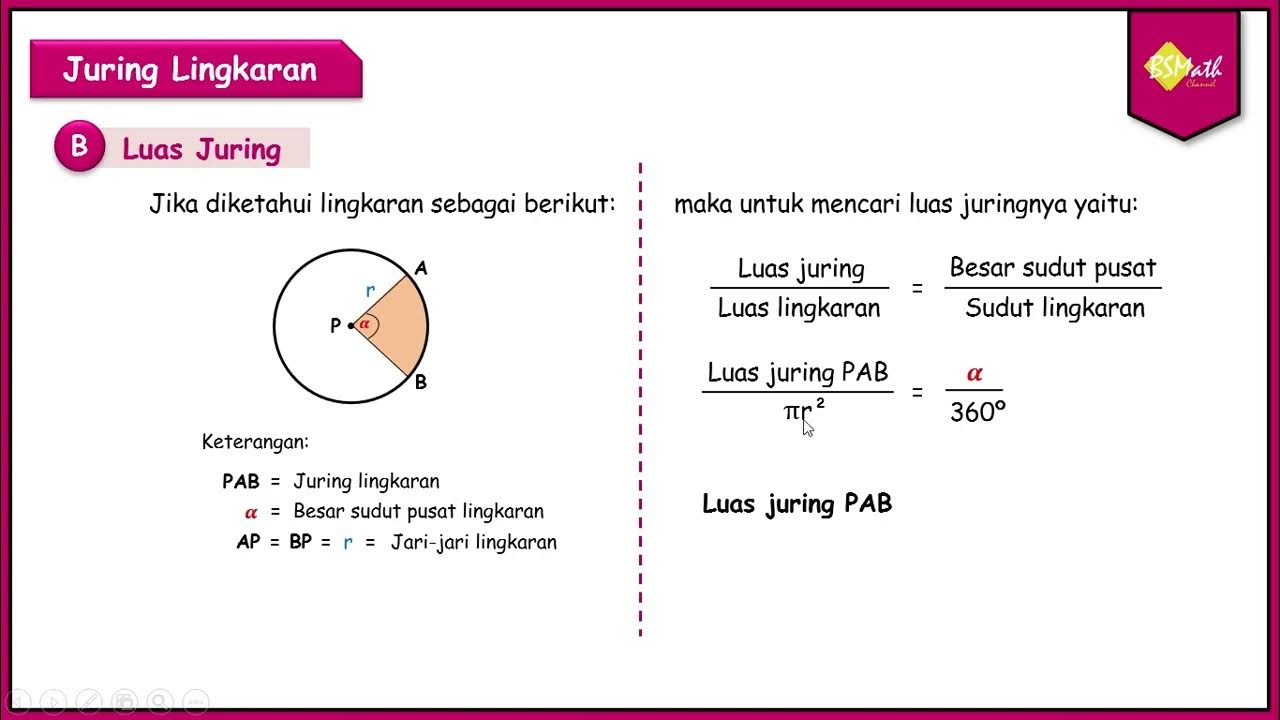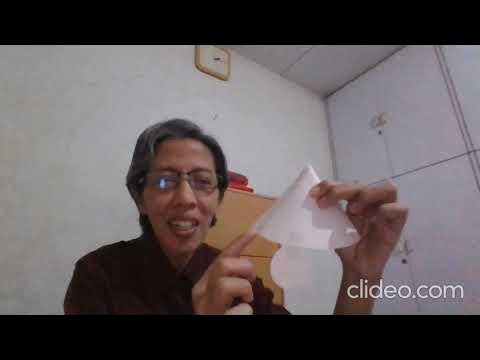Area of a circle, formula explained
Summary
TLDRThis video explains how the formula for the area of a circle, πr², is derived. It begins by visualizing a circle and dividing it into progressively smaller sections. As the sections become infinitesimally small, the shape of the circle starts to resemble a rectangle. By equating the area of the circle to the area of the rectangle, the video shows that the height is equal to the radius, and the base is half the circumference (πr). Ultimately, the area of the circle is found to be πr², offering a clear and engaging breakdown of this mathematical concept.
Takeaways
- 😀 The formula πr^2 gives the area of a circle, but its origin needs to be explained.
- 😀 To understand the formula, we start by drawing a circle and filling its area.
- 😀 The circle is divided into large, equal parts and arranged into a rough rectangular shape.
- 😀 As the circle is divided into smaller parts, the arrangement looks more like a rectangle.
- 😀 The more the circle is divided, the closer the shape gets to a perfect rectangle.
- 😀 The process continues until the circle is divided infinitely, making it resemble a perfect rectangle.
- 😀 The area of the circle is equal to the area of the rectangle formed by this arrangement.
- 😀 The height of the rectangle is the same as the radius of the circle.
- 😀 To find the base of the rectangle, we use the circumference of the circle, which is 2πr.
- 😀 The base of the rectangle is half the circumference, or πr, after simplifying.
- 😀 Multiplying the base (πr) by the height (r) results in the area of the circle, expressed as πr^2.
Q & A
What does the formula πr² represent?
-The formula πr² represents the area of a circle, where 'r' is the radius of the circle.
How is the area of a circle derived from its shape?
-The area of a circle can be derived by dividing the circle into equal parts and arranging them in a rectangular formation. As the number of divisions increases, the shape starts resembling a rectangle more closely.
Why is the circle divided into smaller pieces to find its area?
-Dividing the circle into smaller pieces allows the shape to progressively resemble a rectangle, making it easier to calculate the area.
What happens when you keep dividing the circle into smaller and smaller pieces?
-As the circle is divided into more and more pieces, it becomes closer to the shape of a perfect rectangle, and at an infinite number of divisions, it becomes indistinguishable from a rectangle.
What is the significance of dividing the circle infinitely?
-Dividing the circle infinitely ensures that the shape becomes perfectly rectangular, allowing us to apply the formula for the area of a rectangle to calculate the area of the circle.
How is the area of the rectangle related to the area of the circle?
-The area of the rectangle formed by the divided circle is equal to the area of the circle itself, as both are derived from the same shape and process of division.
What is the height of the rectangle, and how is it related to the circle?
-The height of the rectangle is equal to the radius of the circle, as it is the same dimension that defines the vertical side of the rectangle.
What is the base of the rectangle, and how is it determined?
-The base of the rectangle is equal to half the circumference of the circle. Since the circumference of a circle is 2πr, the base becomes πr when divided by 2.
How is the formula for the area of the rectangle derived?
-The formula for the area of the rectangle is derived by multiplying the base (πr) by the height (r), resulting in πr², which represents the area of both the rectangle and the circle.
Why does the base of the rectangle equal πr?
-The base of the rectangle is πr because it is derived from half the circumference of the circle, which is 2πr. Dividing 2πr by 2 gives the base as πr.
Outlines

This section is available to paid users only. Please upgrade to access this part.
Upgrade NowMindmap

This section is available to paid users only. Please upgrade to access this part.
Upgrade NowKeywords

This section is available to paid users only. Please upgrade to access this part.
Upgrade NowHighlights

This section is available to paid users only. Please upgrade to access this part.
Upgrade NowTranscripts

This section is available to paid users only. Please upgrade to access this part.
Upgrade Now5.0 / 5 (0 votes)





